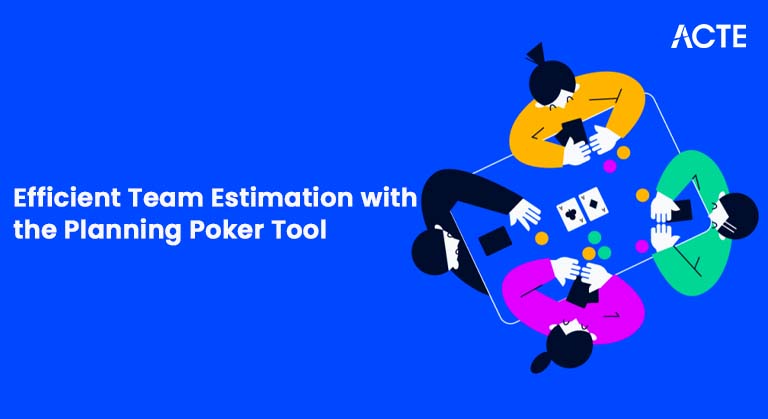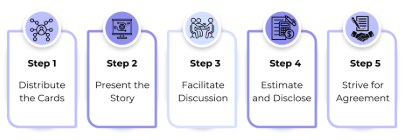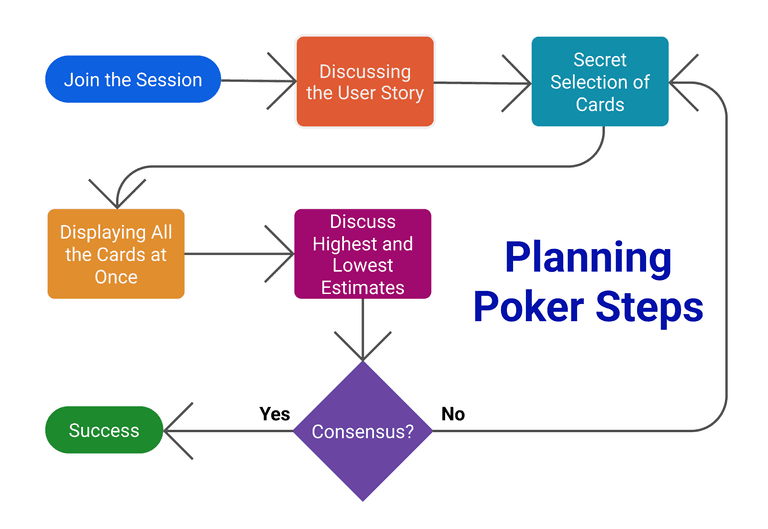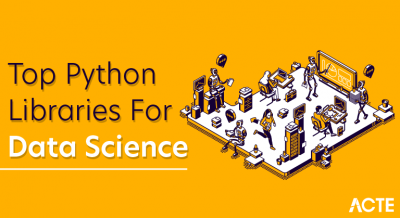
- Introduction to Planning Poker
- History and Origin
- Purpose of Planning Poker
- Roles in Planning poker tool
- Estimation Techniques
- Typical Challenges and Solutions
- Tools for Digital Planning Poker
- Real-World Applications
- Tips for Accurate Estimation
Introduction to Planning Poker
Planning Poker is an estimation technique through consensus used by Agile teams to estimate the complexity or effort of user stories or tasks. Poker Scrum mixes experienced opinion, teamwork, and statistical averaging to reach more precise estimations.Planning poker scrum emphasizes team participation and lessens prejudice by anonymously having every participant give his opinion. With a Data Science Course Training involving cards, the estimation exercise is more collaborative and fun. It is generally practiced in Scrum and Agile development methodologies to estimate work effort to enhance sprint planning and project management.
History and Origin
Planning Poker was first introduced by James Grenning in 2002 and further made popular by Mike Cohn in his book “Agile Estimating and Planning.” Modeled after the classic game of Poker, this estimation method was created to deal with the problem of inconsistent and unreliable task estimates in Agile development. The use of cards was brought in so that each team member would give independent estimates without discussing their estimates among all members. Since Data Science Applications discovery, Digital Planning, Poker has become a norm in Agile teams practices, improving effort estimation accuracy.
Enhance your knowledge in Data Science. Join this Data Science Online Course now.
Purpose of Planning Poker
- The main aim of Planning Poker is to obtain more realistic and accurate task estimates through team agreement. It assists in detecting possible differences in effort estimates by facilitating open discussion.
- The method fosters teamwork, ensures all inputs are heard, and reduces the impact of strong personalities. Also, poker scrum assists the team in agreeing on the effort and complexity of each task, resulting in improved sprint Digital Planning and workload allocation.
- By improving estimates as a group, teams can improve project predictability and minimize the risk of underestimating or overestimating work.
- During a Planning Poker session, every team member is handed cards containing numerical values, usually based on the Fibonacci sequence (1, 2, 3, 5, 8, 13, 21, etc.) or adapted scales.
- The exercise begins with the product owner or Scrum Master describing the user story or task that needs to be estimated. Team members choose a card that best estimates the complexity or effort required for the task. All Data Mining and Data Warehousing are exposed at the same time to prevent bias.
- If estimates differ substantially, the team discusses why, and the process is cycled through until consensus is achieved. Roles in Planning poker tool repeated process encourages improved accuracy and shared understanding.

Roles in Planning poker tool
Planning Poker has several vital roles. The Product Owner clarifies and describes the user stories or tasks, offering pertinent information. The Scrum Master conducts the session so that communication runs smoothly and time is well managed. Members of the Agile development Team are involved in the estimation exercise by picking cards based on the perceived complexity of tasks. In certain situations, Scrum Poker or domain experts might also contribute additional context. Contributions from each member help achieve a balanced and realistic estimate through joint discussion and agreement.
Enhance your knowledge in Data Science. Join this Data Science Online Course now.
Estimation Techniques
Planning poker scrum applies several estimation methods to assess effort or complexity. The most popular is the Fibonacci scale, where each number grows stepwise to identify rising uncertainty in increasing estimates. The Modified Fibonacci sequence or the use of T-shirt sizes (XS, S, M, L, XL) is favored by some teams as Data Analytics Tools keeps things simple. Another method used is relative sizing, where tasks are estimated relative to the ones estimated earlier to have similar consistency. Affinity estimation clusters comparable-sized stories together before applying precise values. Poker scrum methods assist teams in putting in several efforts while managing uncertainty and complexity.
Advantages of Planning Poker
Planning Poker has numerous advantages for Agile teams. Roles in Planning poker tool promotes collaboration and guarantees every team member’s input, resulting in more reliable estimates. The consensus approach mitigates the Data Science Course Training of domineering members and reduces cognitive bias. Exhaustive discussions encourage an improved understanding of the task requirements. The method enhances sprint planning with realistic time estimations, raising Agile projects predictability. Planning Poker also generates an open and orderly estimation process, promoting trust and accountability among team members.
Looking to master Data Science? Sign up for ACTE’s Data Science Master Program Training Course and begin your journey today!
Typical Challenges and Solutions
- Practical as it may be, Planning poker scrum can come with some challenges. Different levels of expertise may result in disparate estimates. To mitigate this, teams can encourage open communication and clarify the reasoning behind estimates.
- Groupthink is possible when people agree with the majority’s views. Facilitators can avoid this by inviting independent estimates before group discussions. Time taken is another issue, particularly in large backlogs.
- To mitigate this, teams can focus on high-impact stories and time-box estimation sessions. Having a structured and focused discussion keeps efficiency and productivity intact.
- To conduct practical Planning Poker sessions, teams must adhere to best practices. Prepare well-defined and concise user stories with Mastering Python details to allow accurate estimation. Scrum Poker the debates to avoid extended discussions.
- Actively involve all team members with diversified inputs. Utilize standard estimation scales to ensure uniformity. Record and discuss past estimates for enhanced precision over time. Continuously update the backlog to prevent estimating outdated or irrelevant tasks. Using these practices improves the efficiency and accuracy of Planning Poker sessions.

Tools for Digital Planning Poker
Virtual Planning Poker software simplifies the estimation process in distributed or remote teams. Scrum Poker Online and PlanningPoker.com enable teams to establish virtual sessions with real-time collaboration. Agile Poker for Jira connects seamlessly with Jira and is easy to use during backlog grooming. Poker Planner provides mobile-optimized estimation sessions for remote teams. PointingPoker has an easy-to-use interface for simple voting and discussion. Such software enables smooth digital collaboration, making Planning Poker valuable and efficient for geographically distributed teams.
Want to ace your Data Science interview? Read our blog on Data Science Interview Questions and Answers now!
Real-Life Applications
A number of organizations have successfully adopted planning poker scrum to enhance the accuracy of Agile projects estimations. In an Agile development firm, Planning Poker decreased estimation errors by 30%, leading to more predictable sprint deliveries. A fintech company employed Planning Poker to increase backlog Natural Language Processing, allowing quicker release cycles. The method enhanced cross-functional collaboration in a large corporation, decreasing misaligned effort estimations. Poker scrum practical examples show how Planning Poker enhances estimation reliability, team alignment, and Agile projects outcomes.
Tips for Sound Estimation
Teams should follow sensible tips to make correct estimates. Segment large tasks into smaller units that are easier to estimate more precisely. Ask team members to defend Agile teams estimates to stimulate substantial conversation. Compare new estimates with the same past efforts using historical statistics. While making estimates, account for outside factors, including dependencies and technology complexity. Estimate periodically to apply fresh information. By implementing Data Science Course Training tips, teams can improve the accuracy and efficiency of their planning poker scrum sessions. Planning Poker is a robust and collaborative estimation method that ensures accuracy, transparency, and team alignment in Agile projects. By adhering to best practices, utilizing proper Roles in Planning poker tool, and fostering open communication, teams can enhance Scrum Poker estimation reliability and deliver successful projects efficiently.





